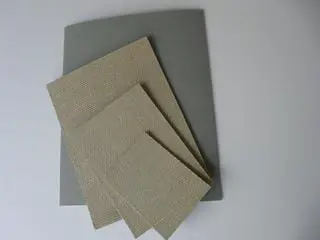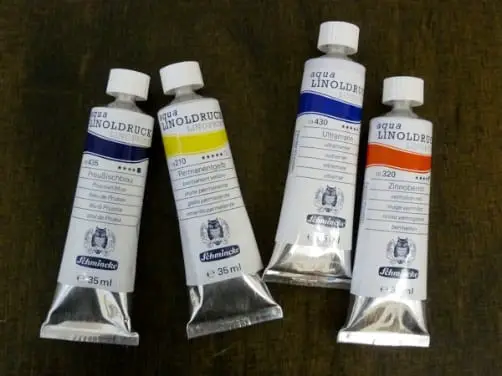
Linocut is known for having the same techniques as woodcut printmaking. The only difference is the material used. Instead of using woods, linocut uses a linoleum or lino. Artists create and carve images on the linoleum. It is then inked and printed. This is then transferred into a paper or any other materials.
Just like all other printmaking forms, printmaking linocut also uses the tools, ink, and other supplies. There are also techniques and tips to get the most out of printmaking linocuts. These help beginners and even pro artists to make the best image out of this printmaking technique.
A simple single-color printmaking linocut is easier to do compared to the multi-color prints, which are a bit challenging. However, these two techniques are still commonly used even for any type of artist. These printmaking linocut techniques may sound daunting, but the process is easier once the basics are met. To get to know more about printmaking linocut, get to know the essential things first.
Printmaking Linocut Materials
To get started, the basic materials needed must be complete. This is for the artists’ convenience. Once these materials are complete, it would be easier to get the perfect image.
Linoleum
This is the most important tool in linocut printmaking. Linoleum is described as easy and soft by some manufacturers. There are also artists and traditional linoleum in color brown or grey. Traditional ones are made of blended cork and wood flour pressed and mixed with linseed oil creating the soft and gentle brittle, which is best or cutting.

Ink
The ink will help the image come to life. To create the perfect hues, ink should be of great quality and consistency. There are a lot of linocut inks available in the market. The inks vary on the kind of linocut print the artist will make: either single or multicolor prints.

Roller
Another helpful tool for relief printing is the roller. These rollers come in different sizes and use. There are hard and soft rollers. Mot hard rollers will leave marks on the edges while soft rulers will ink evenly but leaves more in the groove.
Carving Tools
A good carving tool will make it easier to get the desired shape and image. Thus, these carving tools must be of the right shape and sharpness. Though linoleum is soft, the right tools will make it more convenient to carve on the surfaces.
Printmaking Linocut Process
Drawing the Design
On a separate sheet of paper, sketch, or draw the aspired image. This is where the artists explore with colors, patterns, and designs. Drawing it on a piece of paper makes it easier to get a clear view of what it’s going to look after printing. After drawing, the image can be transported using a transfer paper or drawn on the block.
Block Carving
Using gouges or the different linocut carving tools, the image is then carved into the linoleum. Make sure to be careful when using these tools. For safety purposes, carve in a direction away from your other hand. Selecting the best and sharp tools make all the carving easier and done correctly.
Putting Ink
Make sure the linoleum is clean and dry. Take a small amount of ink and lay it on the inking plate. The ink on the linoleum. Make use of the roller and roll the ink up in one direction until they are in the right consistency. Then take the roller and ink the linoleum. This time you can go in any direction and make sure each surface is inked down.
Printing
Once the linoleum is inked down, get a piece of paper and lay it down on the linoleum. Make sure to put it correctly, so the image is transferred in the correct direction. Use a baren – a disk-like tool that would help put pressure on the paper is gently pushed on the linoleum evenly for the ink to cling.
Printmaking Linocut Techniques and Tips
Choosing the Right Lino
There are different brands and kinds of linoleum available. Most of these are labeled differently. Some are soft, easy, and even traditional ones. Soft and easy linoleum needs cutting in and out to avoid any tearing, while traditional lino makes cutting easier due to the good materials it is made of making one save time and gets a neater carving.
Another to remember about Linoleum is the amount of shelf life it has. After a couple of years, traditional lino goes hard because of the evaporated linseed oil. Fresh lino is bendable, easily cut, and has the smell of linseed. Linoleum doesn’t work well in cold weather since they will harden. Make sure they are stored in the right room temperature.
Designs
To make the most of the preferred design, make sure to check which is the best for the lino. Designs and repetitive patterns work well with linoleum. Outlined and borders are also good. The trick is to imagine how the final design will look once it is craved on the linoleum.
Invest
There are a lot of cheap tools available for printmaking linocuts, but the best investment would be on the rollers. Cheap rollers can destroy the work easily, for they push the ink around and would cause inconsistency on the layer of ink, making the transfer messy and hard.
Where to Cut
Start cutting on the design where you are most comfortable or where you want to clear some designs right away. This way, there will be lesser mistakes and will avoid cutting the unsure patterns.
Sharp tools
Always keep the tools sharp and ready to use. This will help avoid mistakes and keep the artist safe. To keep it sharp, the stropping paste can be used to prepare the tools without causing damages.
Ink
It is important to learn the talent of inking. This is a vital process of printmaking linocuts. Constant practice with different colors using small ink rollers is a way of learning the conventional way of inking the linoleum.
The Art of Waiting
When using multi-color, there is a need for the color to dry before putting another one. It is needed to be patient in order not to damage and mess up the colors. To keep the wait short, water-based ink can be used since it easily dried or use driers instead of oil-based inks. The same patient is needed when cutting the linoleum. To cut neatly with a nicer result, cutting patiently and correctly is the answer.
Conclusion
Printmaking linocut is a fun experience where an artist gets to practice creativity using inks, blocks, and patterns. The process may take some patient and time, but the result is fulfilling.
Beginners may find it tedious due to the carving and the amount of time needed, but for those who find peace in making sure all the carved details are neat, this can be therapeutic in some ways. Practicing linocut printing can be a good hobby, and a nice way to get to know the history of printmaking.

